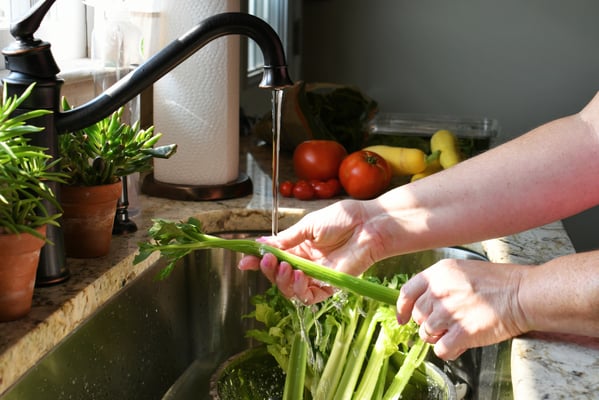Reposted: Savor the Season Safely - Top Food Safety Practices for Summer Dining
Summer is a wonderful time to enjoy outdoor activities and delicious food with family and friends, but there are important health issues that warmer weather brings when it comes to food safety. Maxine Cimperman, a registered dietitian, in a discussion with ViaroThrive’s health education intern, Mara Aschliman, shares some expert advice on how to stay healthy and keep your meals safe during the warm summer months.
Mara: Could we start this off by discussing some of the challenges warm weather brings when it comes to food? Aren’t there common food safety issues that arise during warmer weather?
Maxine: Absolutely! Summer warm weather does bring some extra concerns when it comes to food safety. Anything done in the hot weather such as grocery shopping, using the grill, cooking and preparing food, as well as leaving perishable items out in the heat, are all going to pose a risk of foodborne illness. No one wants a stomach bug, much less share it in food with friends, when you should be outdoors enjoying yourself!
Mara: How do we know when food is not safe? Is there a danger zone in temperature so we can be more aware when the potential exists for contamination?
Maxine: Great question! It is hard to know, because often food does not look or even smell any different when it’s not safe to eat. A danger zone is an effective way to look at it. Food that is not kept below 40° F and stays between 40° F and 140° F causes concern. In this temperature zone, bacteria grow very quickly. The bottom line here is that you need to keep your cold foods very cold, below 40° F, and hot foods hot, above 140° F. By doing this, you limit the growth of bacteria, which in turn keeps you safe from foodborne illnesses.
Mara: Thank you for this excellent advice! You also mention safety issues that arise with outdoor cooking and grilling. What can you share with us?
Maxine: There are a few important things to keep in mind when cooking and grilling outdoors. First things first, keep things clean! Clean the grill before and after each use and wash your hands and your workstation to limit the spread of unwanted bacteria. Make sure to also heat up your grill for at least 15 minutes to destroy bacteria.
Use a thermometer. Get a good one that reads temperatures quickly. It is worth it. You will know for sure when your food is cooked to the proper temperature. Using a thermometer is the best way to find that your food is safe to eat.
Lastly, be careful with perishable foods left out in the heat! Don’t leave normally refrigerated food out of the refrigerator or cooler for more than two hours. When storing leftovers, make sure to store hot food in shallow dishes for a quicker cool down. This will prevent bacteria growth.
Mara: Great insights! Any last tips for our readers?
Maxine: Definitely! For your fresh fruit and veggies, remember to always give them a good rinse, wash or scrub. The only time you won’t need to do this is if it says “prewashed” on the package. Stick with produce that is in season to make sure you are getting it as fresh as possible. If you buy precut produce like sliced fruits or veggies, make sure to put them in the fridge right away. This should keep them fresh and limit bacteria. At the grocery store, pick up your refrigerated and freezer items last, to keep them as cold as possible.
Cleaning up is also super important. After using utensils and cutting boards make sure to thoroughly wash them with hot soapy water. And don’t forget to regularly wash dish towels and wash clothes.
Mara: Thank you so much for sharing these food safety tips! I know we tend to forget some of the basics when we are out there enjoying the beauty of summer with friends and family. Thanks to our readers as well! Want more information? Visit https://https://foodsafety.gov. or https://www.usda.gov/media/blog/2022/06/30/your-top-10-food-safety-tips-summer-grilling



.png)